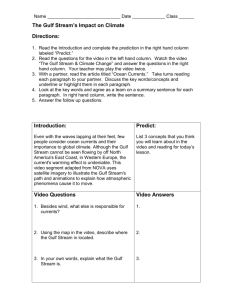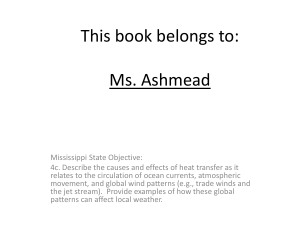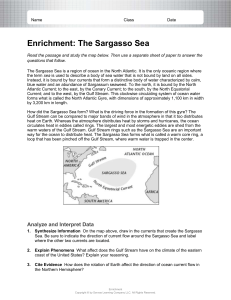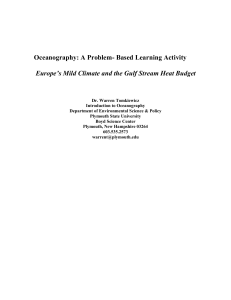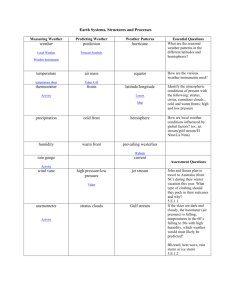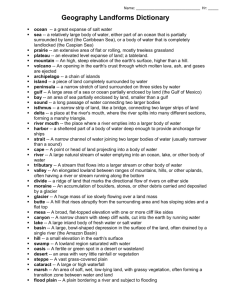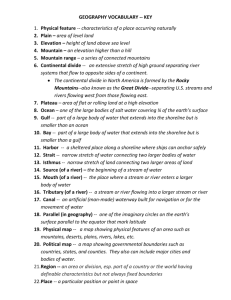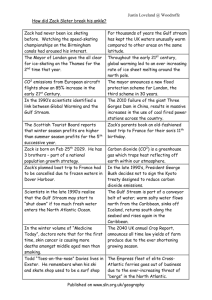What Causes the Gulf Stream
advertisement
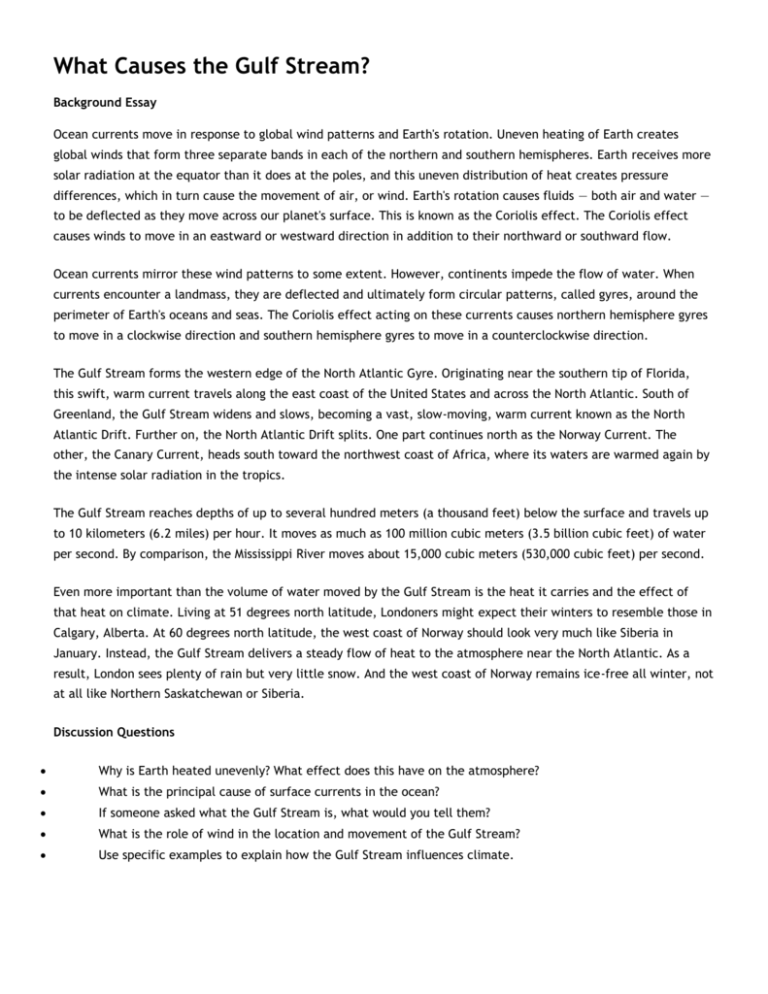
What Causes the Gulf Stream? Background Essay Ocean currents move in response to global wind patterns and Earth's rotation. Uneven heating of Earth creates global winds that form three separate bands in each of the northern and southern hemispheres. Earth receives more solar radiation at the equator than it does at the poles, and this uneven distribution of heat creates pressure differences, which in turn cause the movement of air, or wind. Earth's rotation causes fluids — both air and water — to be deflected as they move across our planet's surface. This is known as the Coriolis effect. The Coriolis effect causes winds to move in an eastward or westward direction in addition to their northward or southward flow. Ocean currents mirror these wind patterns to some extent. However, continents impede the flow of water. When currents encounter a landmass, they are deflected and ultimately form circular patterns, called gyres, around the perimeter of Earth's oceans and seas. The Coriolis effect acting on these currents causes northern hemisphere gyres to move in a clockwise direction and southern hemisphere gyres to move in a counterclockwise direction. The Gulf Stream forms the western edge of the North Atlantic Gyre. Originating near the southern tip of Florida, this swift, warm current travels along the east coast of the United States and across the North Atlantic. South of Greenland, the Gulf Stream widens and slows, becoming a vast, slow-moving, warm current known as the North Atlantic Drift. Further on, the North Atlantic Drift splits. One part continues north as the Norway Current. The other, the Canary Current, heads south toward the northwest coast of Africa, where its waters are warmed again by the intense solar radiation in the tropics. The Gulf Stream reaches depths of up to several hundred meters (a thousand feet) below the surface and travels up to 10 kilometers (6.2 miles) per hour. It moves as much as 100 million cubic meters (3.5 billion cubic feet) of water per second. By comparison, the Mississippi River moves about 15,000 cubic meters (530,000 cubic feet) per second. Even more important than the volume of water moved by the Gulf Stream is the heat it carries and the effect of that heat on climate. Living at 51 degrees north latitude, Londoners might expect their winters to resemble those in Calgary, Alberta. At 60 degrees north latitude, the west coast of Norway should look very much like Siberia in January. Instead, the Gulf Stream delivers a steady flow of heat to the atmosphere near the North Atlantic. As a result, London sees plenty of rain but very little snow. And the west coast of Norway remains ice-free all winter, not at all like Northern Saskatchewan or Siberia. Discussion Questions Why is Earth heated unevenly? What effect does this have on the atmosphere? What is the principal cause of surface currents in the ocean? If someone asked what the Gulf Stream is, what would you tell them? What is the role of wind in the location and movement of the Gulf Stream? Use specific examples to explain how the Gulf Stream influences climate.
